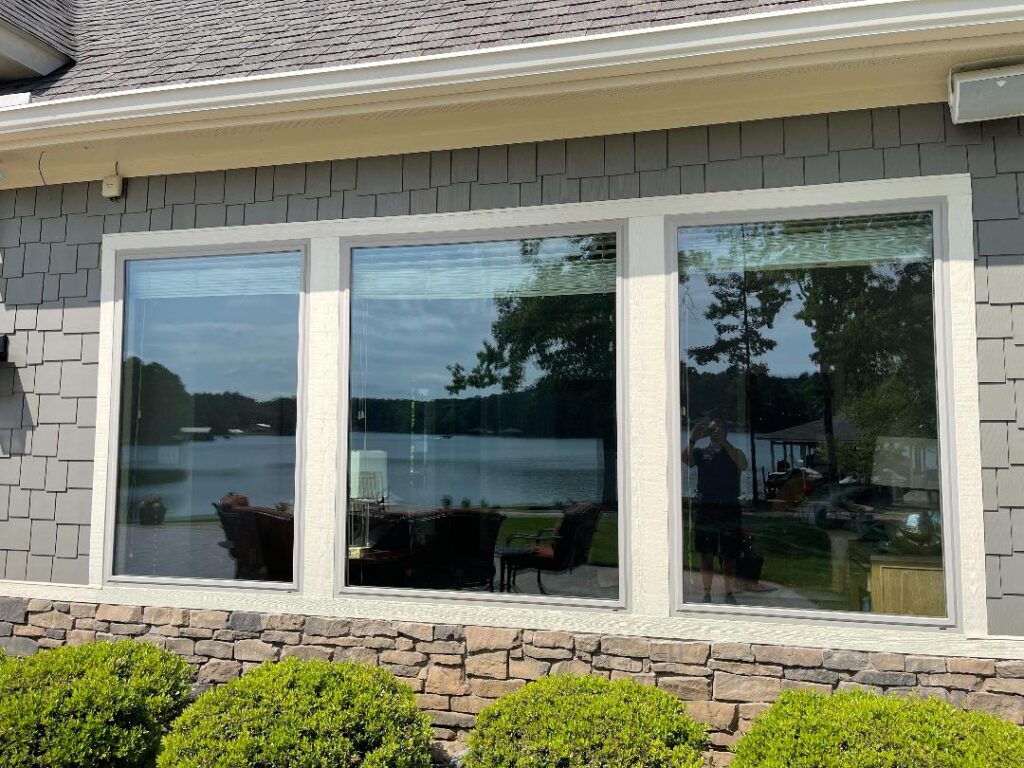Just How Residential Window Tint Can Reduce Energy Costs
Just How Residential Window Tint Can Reduce Energy Costs
Blog Article
Just How Residential Window Tinting Boosts Your Home's Energy Performance
Residential home window tinting presents an engaging solution for house owners seeking to boost energy effectiveness within their home. By using specialized films to home windows, it effectively minimizes heat transfer, consequently stabilizing interior temperature levels and reducing the demand for excessive home heating or cooling. This not only stops energy usage yet also gives a more comfortable setting by mitigating glow. Recognizing the nuances of exactly how tinting jobs and selecting the suitable kind for your home can be crucial. Curiously, what aspects should one take into consideration prior to making this investment?
Comprehending Home Window Tinting
Comprehending home window tinting is crucial for homeowners looking for to enhance both comfort and power performance in their living spaces. Residential Window Tint. Window tinting entails the application of a slim movie to the inside or outside surface area of glass home windows. This film can considerably modulate the amount of sunlight and warmth that gets in a home, hence affecting indoor climate conditions
There are various kinds of home window tinting movies offered, each with unique buildings. For example, colored films absorb solar power, while reflective movies deflect it away from the glass surface area. Ceramic movies use a balance of visibility and heat denial, making them a prominent option among property owners. The efficiency of window tinting is often gauged by its Visible Light Transmission (VLT) portion, which indicates just how much light can go through the movie.
Advantages of Energy Performance
Home window tinting not only boosts aesthetics however also plays a substantial role in boosting energy effectiveness within residential rooms. By decreasing warmth transfer through home windows, tinted films develop a more steady indoor climate, which can bring about significant decreases in power consumption for home heating and air conditioning. This energy performance translates into reduced utility expenses, supplying homeowners with considerable lasting savings.

In addition, window tinting enhances the convenience of living spaces. By reducing glow and obstructing dangerous UV rays, tinted home windows produce a more pleasant setting, which can cause improved health for passengers. The protection versus UV rays likewise aids protect furniture and floor covering from fading, contributing to the long life of home things.
Exactly How Tinting Functions
Tinting films run with a mix of sophisticated materials and innovations designed to manage the quantity of solar energy getting in a home. Mainly made up of polyester, these films usually integrate ceramic or metallic bits that reflect and take in warm. This twin capability permits them to significantly minimize the infiltration of ultraviolet (UV) rays and infrared radiation while permitting noticeable light to travel through.
The effectiveness of home window tinting is gauged by its solar heat gain coefficient (SHGC), which shows just how much solar energy is sent via the window. Lower SHGC worths are preferable as they signify better warmth rejection. Furthermore, home window colors can feature a variety of shades, permitting homeowners to customize their aesthetic choices while boosting power performance.
Furthermore, these films function as an obstacle, protecting useful reference against heat loss during colder months by showing interior warmth back right into the home. This thermal insulation result matches the cooling advantages obtained throughout warmer months, adding to a balanced indoor climate year-round. By managing solar energy efficiently, domestic window tinting not only enhances comfort but also plays an important role in decreasing energy consumption and lowering utility bills.
Picking the Right Color

There are different kinds of window films readily available, including dyed, metalized, and ceramic. Colored movies are affordable however might have limited toughness. Metalized films provide far better warmth rejection however can disrupt digital signals. Ceramic films offer superb warmth control without compromising exposure and are very durable, making them a popular option.
Noticeable light transmission (VLT) is an additional crucial element, as it suggests the amount of natural light that can pass with the tinted glass. House owners need to choose a tint with a VLT that matches their illumination preferences while still supplying appropriate glow decrease.
Furthermore, examining the solar warm gain coefficient (SHGC) can assist figure out exactly how well a tint can block heat from sunshine. A reduced SHGC suggests much better warm control, ultimately enhancing energy performance.
Setup and Maintenance Tips
Appropriate installation and maintenance are essential elements in making the most of the advantages of residential home window tinting. Professionals likewise make use of specialized tools and methods, which can improve the durability and efficiency of the color.
Following setup, upkeep is vital to lengthen the life of the home window film. It is suggested to wait at the very least thirty days prior to cleansing the tinted windows to enable the glue to cure completely. When cleansing, make use of a soft towel and a gentle, ammonia-free cleaner to prevent harming the movie. Prevent abrasive products that can damage the surface.
Attending to these problems quickly can prevent further damages and preserve energy efficiency. By sticking to these installment and maintenance suggestions, homeowners can guarantee their home window tinting continues to offer considerable energy financial savings and convenience for years to come.
Final Thought
In final thought, residential window tinting offers as an effective remedy for enhancing power efficiency within homes. By minimizing warmth transfer and blocking unsafe UV rays, window movies add to lower energy intake and improved indoor convenience.
Window tinting includes the application of a slim movie to the interior or exterior surface of glass home windows. By lowering warm transfer via windows, tinted films develop right here an extra stable indoor environment, which can lead to substantial decreases in energy consumption for heating and air conditioning.The performance of window tinting is measured by its solar warm gain coefficient (SHGC), which suggests just how much solar power is sent through the window. By managing solar energy successfully, household home window tinting not just boosts comfort but also plays an important function in minimizing power intake and decreasing energy costs.
By lowering warmth transfer and obstructing harmful resource UV rays, window films contribute to decrease power intake and boosted interior convenience.
Report this page